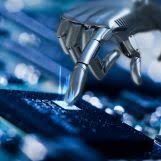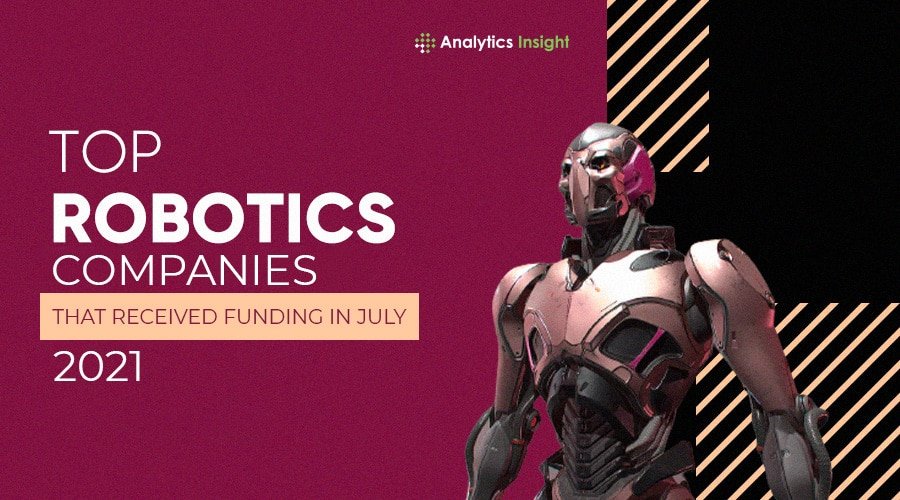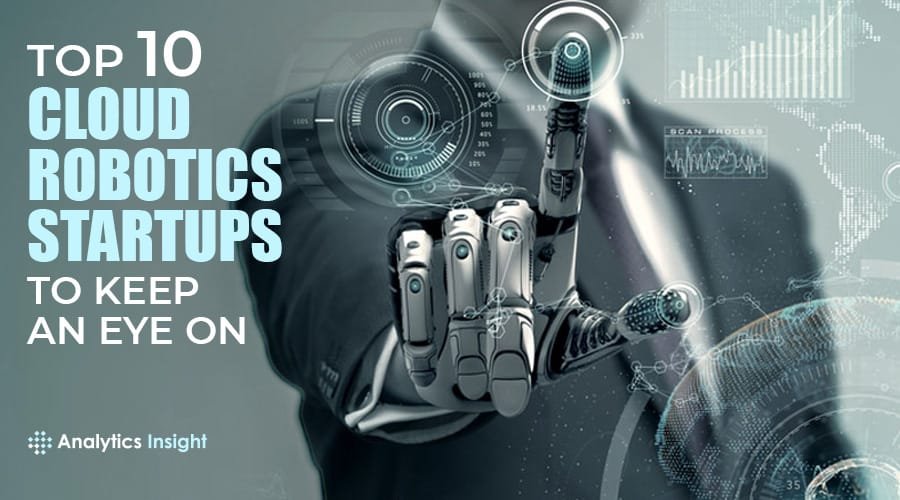Source: analyticsinsight.net
Artificial intelligence and robotics are bringing drastic changes in the technological fields. Things we only imagined twenty years back have now become a reality. From automated systems at a manufacturing plant to self-serving robots in a restaurant, technology has evolved, driving humans together. In Today’s world, AI and robots serve people as problem-solvers, companions, and first-responders. Basically, when you chat online with a business on their website thinking that you are talking to their customer representative, you are actually talking to a chatbot. Technology has evolved for good, and it is not going to stop here.
AI and robotics are getting used in multiple fields
When we talk about AI and robotics, they are not specific to a certain industry. Their adaptability has made them the favorites in all the industries and sectors you can name or think of. From gaming to defense, healthcare, automotive, fitness, education, retail, manufacturing, and whatnot. Online gambling, for example, is a billion-dollar industry, and online gambling platforms like True Blue Casino have already started using AI-based algorithms that control the outcome of the gameplay.
So, it is safe to say that machines and computers will positively manage most of our dealings. It is just the start. AI, machine learning, and robotics are bound to progress further in the coming years before they become commonplace. Data has played a crucial role in the development of these systems because data has enabled these machines to learn on their own. With that being said, let’s discuss the applications of AI and robotics and how they are going to shape our future.
Where AI and Robots are used Today?
AI and robots are a powerful combination for automating tasks. In recent times, artificial intelligence has become a significantly common presence in robotic solutions, bringing in learning capabilities and flexibility in previously rigid applications. While still being nascent, both technologies work well when combined.
1. Virtual Assistant and Chatbots
Virtual assistants and chatbots propel the world with astounding automation levels, driving costs down, and productivity. Virtual assistants are a manifestation of AI and machine learning through the simulation of conversation with humans. Virtual assistants and chatbots are designed to obey automated rules using capabilities called Natural Language Processing (NLP). The recent advancements in technology have significantly improved their performance. From Siri to Google Assistant and Alexa, they are the glorified versions of virtual assistants.
From answering the basic questions like Today’s date and weather to performing some complex tasks like “Hey Siri! Set up an alarm for 8 AM,” these virtual assistants will slowly replace your human assistants. The best part is that they amalgamate very well with machines in your home. With the likes of IoT (Internet of Things), you can command your virtual assistant to turn on the light or AC or music in your house.
2. Agriculture and Farming
Believe it or not, robotics and AI are your next best bet for sustainable agriculture. With the food supply chain facing a crisis, courtesy of centuries of environmental abuse, over-farming, labor shortages, and population growth, it is threatening our most basic needs. AI and automation are believed to provide relief from the effects of an aging agricultural workforce. With the likes of autonomous drones, self-driving agricultural machines, etc., farmers can spend more time focusing on creating sustainable harvests and less time watching the path in front of them.
Deere is a well-known agriculture equipment manufacturer that is popular for its self-driving machinery. Also, it expanded its agricultural arsenal with the introduction of an automated weed sprayer. It uses next-gen technology with advanced robotics, machine learning, and computer vision to distinguish between crop and weed. Also, Big Data is helping farmers to deliver better crops. Big Data has given rise to prescription agriculture that uses web-based tools for creating maps or prescriptions, telling farmers how much fertilizer they need to apply to certain crops and areas.
3. Autonomous Flying
Autonomous flying uses computer vision technology for hovering in the air while avoiding obstacles and moving in a straight path. With the introduction of artificial intelligence, these flying machines are getting smarter. From aerial view monitoring to security surveillance, video recording, rescue missions, and more, drones and unmanned aerial vehicles are revolutionizing and replacing many job roles. The application of computer vision in autonomous flying includes obstacle detection, collision avoidance, self-navigation, and object tracking.
Machine learning can bring some drastic changes to how autonomous flying vehicles function. While object tracking UAVs capture real-time data, it also uses an on-board intelligence system that enables it to make human-independent decisions based on the real-time data.
These drones can be used in urban management and smart cities for advanced surveillance, quick facial recognition, or tracing unwanted objects. They are also highly beneficial in agriculture and farming as they can monitor crops, check the soil fertility, assess soil, and help crop production. Other applications may include:
- Scanning or mapping terrain of buildings in real estate;
- In the military to bombard or combat enemies in the war;
- For human tracking and face recognition.
4. Retail, Shopping and Fashion
The retail sector is reaping the benefits of AI and machine learning for some time now. Artificial intelligence is helping retailers better understand their target market through data analysis. Since data is the new currency of this digital world, it can make or break a business. Keeping this in mind, retailers are using predictive analytics to help forecast customer behavior based on sales data. E-commerce sites are using recommendations based on the customer’s regional search trends, location, and search history. Moreover, shopping sites like Amazon offer its customers product recommendations based on past sales data.
AI also helps retailers enhance their online store by customizing messages they send to their prospective customers. Content generation is a tedious process, but with AI’s Natural Language Generation (NLG), retailers can send targeted messages and offers to customers.
Robots have been introduced to manage the inventory and sales floor, giving ultimate precision and cutting high costs. And when it comes to fashion, AI is slowly taking over the supply chain and fashion store. From sorting of dresses to sewing, these mundane tasks are performed by AI-induced systems with better accuracy and faster speed. Robots can easily stitch fabrics with precision and can also detect flaws in the material, ensuring quality assurance.
5. Security and Surveillance
The robots developed Today use artificial intelligence, long-range sensors, high-definition cameras, and fast computer processing, all of which makes for a pretty decent security system for different needs. Experts believe that robots can easily guard a designated area. There are robots in the making that uses mapping software for creating a geo-fenced perimeter.
They are designed to monitor the grounds and inside of the building. These security robots are intelligently designed and use differential GPS that can easily find objects within a few centimeters. So, when it is moving, it knows exactly where it is. They can record and store data on a daily basis with their security camera. The foundation of an AI-based security system is a self-monitoring system that features an HD camera.
The latest AI-powered security robots use facial recognition to store the identities of people visiting a particular house or building and create a catalog of individuals who are regular visitors or those who are known.
6. Sports Analytics and Activities
The sports industry is embracing artificial intelligence and robots to make games more exciting and fairer. Sports are more than just games for millions of people. For some, it is an emotion. Above all, it is a billion-dollar industry. With so much at stake, organizations and associations across the globe are trying their best to gain a competitive advantage and keep the fans happy using robotics technology and artificial intelligence.
AI is helping players improve their fitness and help teams discover new talents. In some sports, robot referees are already a thing, while smart machines are assisting spectators in finding their seats at the stadium. For those who don’t want to visit the jam packed stadium to have fun, their fan experience is retained and redefined using VR headsets. Artificial intelligence is also helping clubs and teams come up with strategies based on previous data.
The following are some of the interventions that are being implemented in the sports industry:
- Smart apps and Virtual Reality tech are driving fan engagement;
- Tech-powered refereeing is soon going to become a reality;
- Smart algorithms are developing new games;
- AI is helping team management and support staff to find new star players;
- AI is assisting clubs and teams to protect the wellbeing of their players.
7. Manufacturing and Production
The evolution of the manufacturing and production industry is seen with the implementation of robotics and AI. The primary reason for the introduction of AI in the manufacturing industry is to cover for the lack of workforce, simplify the whole production process, and improve efficiency. Earlier, it used to take a whole team’s effort to manage one task system. Now since bots have taken over, it has helped manufacturers boost production speed.
AI is helping the industry by making product decisions instant and smarter. This is an era of customized products, and AI is helping manufacturers gather useful customer data, which is used to make product-based decisions. Also, it has helped the companies to reduce the overall cost of production. AI and robotics is the future of manufacturing. To get a better understanding of how essential are robotics and AI in the manufacturing industry, have a look at their use cases:
- Demand-based production;
- Automatic control;
- Damage control and quick maintenance;
- Product design and redesign.
8. Gaming
Robotics and AI have influenced the way computer games are designed and played. AI is helping game developers to create characters and generate their behavior to imitate humans. The primary goal of artificial intelligence in games is collecting and processing data obtained from players. Above all, it has enabled game developers to create games based on their needs and expectations.
Also, online gambling has benefited a lot from artificial intelligence. It studies the expectations and preferences of the gambler for example in top 10 online casinos Australia, giving them maximum satisfaction from the comfort of their home. The adaptability and learning nature of the algorithm of AI allows for creating realistic and natural game environments.
Last but not least, AI-based games have tremendous graphics. It needs a team of hundreds of developers to create such stunning graphics, but thanks to AI, the whole process is automated. This not only saves time, money, and resources as well.
Conclusion
Artificial intelligence and robotics are the driving force of the future. In the next decade, you will surely see some stunning technological revelations based on AI. AI is all about data, and when properly implemented, it will use the given data to our benefit, automating most of the processes and making our lives easier.


